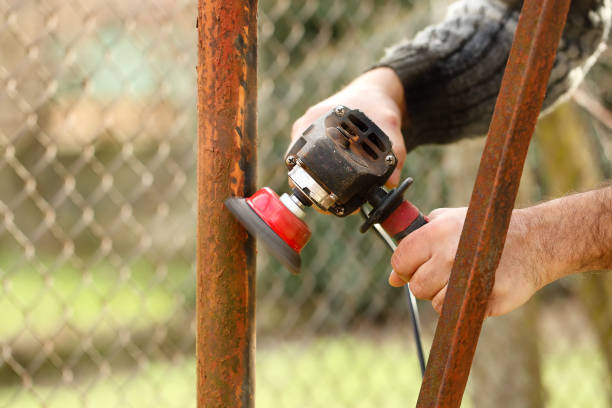In the realm of metalworking and surface preparation, the choice between knotted wire wheels and crimped wire wheels plays a crucial role in achieving desired results. These tools are essential for tasks such as rust removal, paint stripping, and weld cleaning. Each type of wire wheel has its unique characteristics, advantages, and applications. In this article, we will delve into the intricacies of knotted wire wheels and crimped wire wheels to help users make informed decisions based on their specific needs.
What are Knotted Wire Wheels?
Knotted wire wheels are abrasive tools designed with twisted wire knots that form the brushing surface. The knots can be either single or double, and they are typically made from steel wires. These wheels come in various configurations, such as cup brushes, wheel brushes, and end brushes, catering to different applications.
Advantages of Knotted Wire Wheels:
- Aggressive Material Removal:
Knotted wire wheels are renowned for their aggressive cutting action, making them ideal for heavy-duty applications. The twisted knots create a sturdy brushing surface that efficiently removes rust, scale, and other stubborn contaminants from metal surfaces.
- Versatility:
Knotted wire wheels are versatile and suitable for various tasks, including weld cleaning, surface preparation, and edge blending. Their adaptability makes them valuable tools in metal fabrication and maintenance work.
- Durability:
The robust construction of knotted wire wheels ensures durability in demanding environments. The twisted knots provide resilience against wear and tear, allowing these wheels to withstand prolonged usage.
- Suitability for Tough Materials:
Knotted wire wheels excel in handling tough materials such as stainless steel and high-strength alloys. Their aggressive cutting action makes them effective in tackling challenging tasks that crimped wire wheels may find more challenging.
What are Crimped Wire Wheels?
Crimped wire wheels, on the other hand, feature wire filaments that are crimped or corrugated along their length. The crimping process creates a flexible brushing surface that is less aggressive compared to knotted wire wheels.
Advantages of Crimped Wire Wheels:
- Finishing and Polishing:
Crimped wire wheels are well-suited for finishing and polishing applications. The flexibility of the crimped wires allows for a softer brushing action, making them ideal for tasks where a smoother surface finish is desired.
- Less Aggressive:
The softer brushing action of crimped wire wheels makes them less aggressive than their knotted counterparts. This quality is advantageous when working on softer metals or when the goal is to achieve a polished finish without damaging the material.
- Deburring and Light Cleaning:
Crimped wire wheels are effective in deburring applications and light cleaning tasks. They can delicately remove burrs and sharp edges without compromising the integrity of the workpiece.
- Reduced Wire Breakage:
The crimped wire design offers more flexibility, leading to reduced wire breakage compared to knotted wire wheels. This makes crimped wire wheels suitable for applications where the risk of wire breakage is a concern.
Choosing the Right Tool for the Job:
- Material Type:
The choice between knotted and crimped wire wheels often depends on the type of material being worked on. Knotted wire wheels are preferable for tougher materials, while crimped wire wheels are better suited for softer metals.
- Application Requirements:
Consider the specific requirements of the application. If aggressive material removal is necessary, knotted wire wheels are the go-to choice. If finishing and polishing are the primary goals, crimped wire wheels are more appropriate.
- Surface Finish:
For tasks where achieving a smooth surface finish is crucial, crimped wire wheels are the preferred option. Knotted wire wheels may leave a more textured finish due to their aggressive cutting action.
- Safety Considerations:
Safety is paramount in any metalworking operation. Users should assess the risk of wire breakage and choose the wire wheel type accordingly. Crimped wire wheels, with their reduced wire breakage, may be a safer option in certain applications.
Conclusion:
In the world of metalworking, the choice between knotted wire wheels and crimped wire wheels is not a one-size-fits-all decision. Each type has its unique strengths, and the selection should be based on the specific requirements of the task at hand. Understanding the advantages and applications of both knotted and crimped wire wheels empowers users to make informed decisions, ensuring optimal results in metal preparation and finishing processes. Whether it’s aggressive rust removal or delicate polishing, the right wire wheel can make all the difference in achieving efficiency and quality in metalworking applications.


